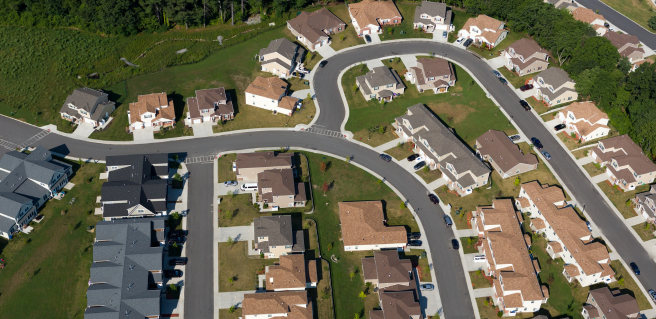St. Bourke, an asset management and property development company, weighs in on the state of the Build-to-Rent industry, noting that it is still in its early stages and much remains to be learned about the emerging asset class. Despite some challenges, such as the availability of suitable land, increasing development costs, and the current debt market, St. Bourke remains optimistic about the future of BTR and its growth potential.
“The Build-to-Rent industry has grown significantly in recent years, expanding from platted lot subdivisions and horizontal apartments to include cottages, townhomes, high-density detached, and conventional single-family subdivisions,” said Katie Fidler, Director – Research & Communications, St. Bourke. “While BTR now has a larger market share than traditional multifamily, we are still figuring out this asset class and how its role will evolve as the nation grapples with an extraordinary housing deficit and affordability challenges.”
The U.S. Census Bureau projects 1.5 million renter formations over the next five years, and half of these are expected to look to SFR/BTR product and communities as their preferred living accommodation.
“This supports BTR being a smart investment and development strategy despite the current challenges facing the larger housing market in light of high development and construction costs and high home prices and mortgage rates,” said Fidler. “BTR is only going to gain more steam; there is a huge runway for BTR growth.”
St. Bourke’s statement comes on the heels of Zonda’s Future of BTR Conference, where industry experts discussed the market’s current state and outlook for the future. St. Bourke shares key conference takeaways:
The BTR occupancy spike in recent years is slowing and returning to pre-Covid levels. Rent growth is slowing as occupancy drops, and more households are consolidating due to high housing costs.
High cap rates are eating into land value, and increasing property taxes across the country are eroding growth potential.
Factors that matter most to those seeking land for BTR communities include competing existing/under construction homes and communities, future planned and future available land supply, demographics, employment growth, political and entitlement risk, school districts, traffic counts, crime rates, noise pollution and nearby nuisances.
Metro Atlanta has demonstrated incredible resilience in light of the greater economic challenges facing the country thanks to its diverse economy and employment base, comparatively low cost of living (including tax base), and relative affordability in terms of both home prices and rental rates – especially when compared to metros like New York, Chicago, Miami and Los Angeles. Because of this, Atlanta holds several strong BTR positions:
- #1 market for For Sale to BTR conversions
- #2 market for active BTR units
- #3 market for BTR units under construction
- #4 market for the number of planned BTR units
- #5 market for total MF starts (including BTR)
“The Build-to-Rent industry has much growth potential, and as the industry matures, we expect to see new solutions to these challenges emerge,” says Fidler.
St. Bourke is an asset management and property development company primarily focused on residential communities and commercial assets. St. Bourke creates thriving communities and drives significant value for its clients, partners, and community stakeholders by offering a full suite of placemaking services ranging from acquisition through detailed design and development to ongoing management. With more than 90 active projects across 20 U.S. markets, the St. Bourke portfolio consists of more than 12,000 acres of land and 25,000 residential lots. Since its inception in 2015, St. Bourke has helped various private and institutional clients achieve their project goals. For more information on how to work with St. Bourke from the ground up, call 678-853-2530 or visit www.StBourke.com.
